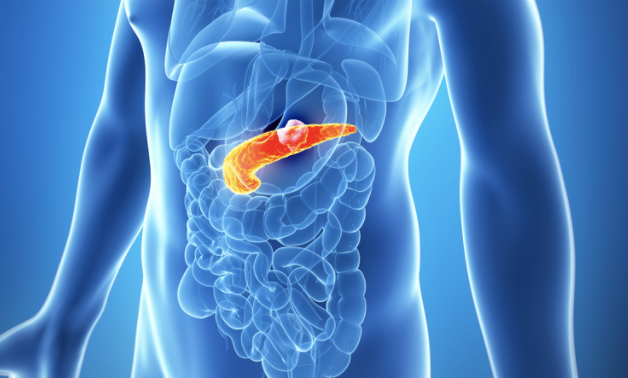Researchers have identified two previously unrecognized symptoms of pancreatic cancer — a discovery that might help with earlier detection and improve extremely low survival numbers, they say.
“When pancreatic cancer is diagnosed earlier, patients have a higher chance of survival. It is possible to diagnose patients when they visit their GP, but both patients and GPs need to be aware of the symptoms associated with pancreatic cancer,” said study author Weiqi Liao, a data scientist at Britain’s University of Oxford.
Along with confirming 21 previously identified signs of pancreatic cancer, the new study pinpoints two new symptoms — feeling thirsty and having dark urine — associated with the deadly disease.
It also shows that patients often have some symptoms of the disease up to a year before their diagnosis, and other significant symptoms three months before diagnosis.
Most pancreatic cancer patients are diagnosed at a late stage and the disease has the lowest survival numbers among all common cancers. In the United States, the five-year survival rate for pancreatic cancer patients is about 10%, according to the American Cancer Society.
The study included more than 24,000 patients who were diagnosed with pancreatic cancer in England between 2000 and 2017.
Yellowing of the skin (jaundice) and bleeding in the stomach or intestine were the two serious symptoms most associated with pancreatic ductal adenocarcinoma (PDAC), the most common type of pancreatic cancer, and pancreatic neuroendocrine neoplasms (PNEN), a rarer form of pancreatic cancer.
The two newly identified symptoms — thirst and dark urine — were associated with PDAC, according to the study. The results were presented virtually Monday at a U.K. National Cancer Research Institute meeting.
Other symptoms linked with PDAC include: problems swallowing, diarrhea, change in bowel habits, vomiting, indigestion, abdominal mass, abdominal pain, weight loss, constipation, fat in stool, abdominal swelling, nausea, flatulence, heartburn, fever, tiredness, appetite loss, itching and back pain.
Other symptoms associated with PNEN include: diarrhea, change in bowel habits, vomiting, indigestion, abdominal mass, abdominal pain and weight loss.
“These new findings enable us to conduct further work on understanding symptoms that could suggest pancreatic cancer. This will help GPs to make decisions about who to refer for urgent tests, especially when patients have several seemingly non-specific symptoms,” Liao said in an institute news release.
Studies presented at meetings are typically considered preliminary until published in a peer-reviewed medical journal. SOURCE: National Cancer Research Institute
By Robert Preidt: HealthDay Reporter
When considering treatment for Pancreatic Cancer, CyberKnife Radiation Therapy should be considered. CyberKnife therapy has been used successfully to treat pancreatic cancer in patients who are poor surgical candidates, those who refuse surgery, and in patients for whom surgery or other treatments have failed.
Treating tumors in and near the pancreas with radiation is challenging because the stomach, bowel, kidneys, and liver are in close proximity to the pancreas, making it difficult to target them safely with radiation. As a result, with traditional radiation therapy, the tumor may not receive enough radiation to destroy it, and healthy tissue near the tumor may be damaged. CyberKnife’s missile guidance technology and respiratory tracking system eliminates that problem. It enables the radiation beam to track tumor movement in real time as patients breathe normally, always staying on target, delivering the highest dose of radiation possible, and destroying the tumor without harming healthy surrounding tissue.
Another bonus: CyberKnife only requires one to five treatments compared to over 25 to 35 with standard radiation.
The treatment is completely pain free. You feel nothing as the computer-controlled robot moves around the body delivering radiation. Patients dress comfortably in their own clothes and can bring music to listen to during treatment.
Nothing will be required of the patient during treatment, except to relax and lie as still as possible.
Once treatment is complete, most patients quickly return to their daily routines with little interruption to their normal activities.
Early results indicate that patients tolerate the CyberKnife procedure well.
Doctors will discuss all possible side effects prior to treatment. In addition, doctors may prescribe medication to control any side effects, should they occur.
After treatment, the patient will follow-up with their doctor and will have CT or PET/CT scan prior to your follow-up appointment.
The patient should be aware that his or her tumor will not suddenly disappear. Response to treatment varies from patient to patient. It could take several weeks or longer to determine the effectiveness of the CyberKnife treatment.
The types of treatment for pancreatic cancer will depend on the stage of the disease. CyberKnife radiotherapy is also often combined with chemotherapy.
Studies show the growth of pancreatic tumors in patients with advanced disease has been controlled by CyberKnife radiosurgery without damaging normal tissues including bowels, kidneys, and liver.
If you have pancreatic cancer, it’s critical to understand your treatment options. To find out if you’re a candidate for life-saving CyberKnife radiosurgery, call the CyberKnife Center of Miami at (800) 204-0455. We are happy to walk you through all your treatment options and determine which is best for you. Whether that is CyberKnife or not.
For all the latest news on cancer and cancer treatment options follow us on Facebook

